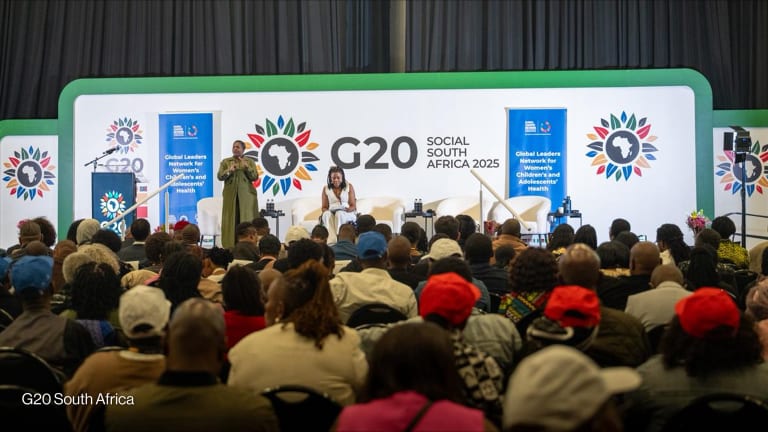
One of the most powerful messages to emerge from the recent World Humanitarian Summit was the need to put peace and conflict prevention at the center of humanitarian crises. At its heart, the current wave of migration is not just a refugee crisis, but a crisis of peace. We need to address the drivers of conflict and not simply the symptoms. To do this, we need to harness not only the resources of governments and donors, but also the powerful collective voice of civil society, which has the power to identify drivers of conflict — and create innovative solutions. It can only do this, however, if it is truly representative and engaged.
With this in mind, the New Deal for Engagement in Fragile States — an agreement between fragile and conflict-affected states, development partners, and civil society — has been running for the last five years aimed at integrating civil society more closely into official peace-building and development work. The project has taught us a great deal about how civil society can work with government and donors as an equal. But the program has also revealed significant gaps in civil society engagement.
For all its promise, the initial phase of the New Deal tended to be dominated by technical processes, without reaching the real goals of inclusion and political dialogue. In practice, this meant that, too frequently, civil society — which is supposedly at the heart of the process — was left out of meaningful participation.
The New Deal links development assistance in fragile states to the achievement of five Peacebuilding and Statebuilding Goals, including legitimate governance, security, justice, economic foundations, and revenues and services. These PSGs reflect core drivers of conflict in fragile states and seek to structure aid in a way that addresses both development and peace.
The International Dialogue on Peacebuilding and Statebuilding is the only globally agreed forum for donors, fragile and conflict-affected states and nonstate actors to discuss and plan for peace.
The International Dialogue’s groundbreaking New Deal initiative supports fragile states to: foster inclusive, legitimate politics; establish and strengthen people’s security; and strengthen and increase access to justice.
What is new here is that the New Deal positions civil society as a central, not peripheral, actor in all phases of planning and programming, from an initial fragility assessment process, through the development of compacts with donors, and implementation using country systems. The structure of the New Deal itself highlights the centrality of civil society to the process.
Yet in practice, this hasn’t always been the case. The way fragility assessments were carried out in many New Deal states is a case in point.
In South Sudan, for example, the fragility assessment did not focus sufficiently on a major driver of conflict: issues around the perceived legitimacy of governance. Civil society did not have a strong enough integrated voice to challenge the power dynamics in the government, which constantly sought to limit civil society space and turn the focus away from governance. Who knows where we would be now if civil society voices had been properly heard.
The case of Liberia is also telling. Civil society groups outside Monrovia complained that the fragility assessment did not have full buy-in and did not accurately reflect the full range of opinions about the drivers of fragility in that country. A draft fragility assessment was pulled together by a donor, based on earlier development plans and surveys, and then circulated for comment to civil society groups in Monrovia — but not widely beyond the capital. Instead, the Liberian government and civil society could have worked together to hold a series of dialogues around the country to identify the key drivers of conflict and fragility.
But there are also stories of success. In the Democratic Republic of the Congo, forums were held throughout the country — led by respected peace-building network PREGESCO — to identify key drivers of conflict and fragility throughout the country. Those conversations fed into a more comprehensive fragility assessment. In this case, civil society — and citizens across the country—had their input bound into the planning process.
Civil society cannot simply be seen as window dressing in peace building. Processes must reach beyond largely male elites and sectoral leaders, to women, youth, business leaders, religious leaders, and a wide range of other nongovernmental actors. These efforts must travel beyond major cities, filtering to communities throughout the country, as happened successfully in the DRC.
These are not simply cosmetic suggestions; they are a central tenet of peace building. If you leave people out, exclusion itself becomes a driver of grievance, and the cycle of violence continues. Unless we get civil society inclusion right, we risk inflaming the conflicts that spur humanitarian misery, and we lose the opportunity to harness a powerful force for peace.
Join the Devex community and access more in-depth analysis, breaking news and business advice — and a host of other services — on international development, humanitarian aid and global health.








